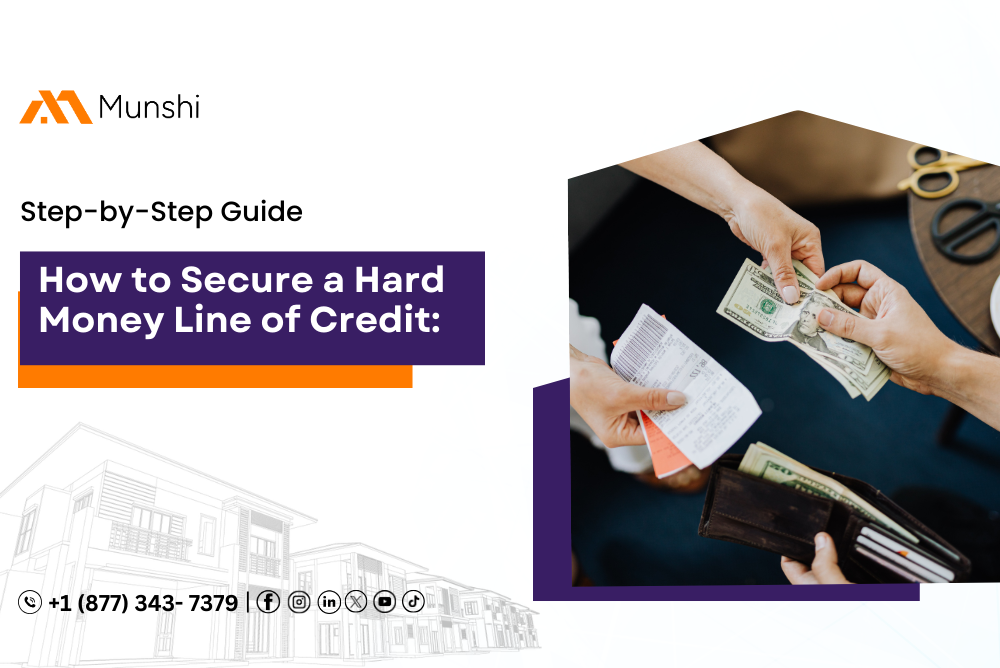Walk into the unconventional world of real estate financing where the hard money loans are undoubtedly toadstools amid the commonly accepted crowd. In the cases where conventional lenders are stuck in their ways, these loans do come in, drawn to the fact that their approval is based on the value of a property, and they typically are short-term. Yes, they could be accompanied by slightly higher interest rates than conventional loans, but let’s be honest; that’s the risk you take when you choose to do things differently!
However, here’s the twist: the performance of a hard money loan depends greatly on the high, low, and cyclical nature of market trends. In this blog post, let’s explore how adversity in hard money lending mixes up with changing market phases and see some smart strategies for victoriously moving ahead.
How Hard Money Loans Are Affected by Market Trends?
#1 Cyclical Market
In the real estate sector, the market has a cyclical pattern, oscillating from a euphoric state to saturation as well as crisis and recovery. Throughout the cycle, property prices and demand increase while investors attracted by capital multiply. This stage poses enormous hard money lenders’ portfolio options for investors who target such favorable threads.
Although the market tends to list off in the process of topping, undercutting creeps in as a result of oversupply that kills the momentum. During this phase, all the hard money lenders are apprehensive and apply more stringent qualification criteria to minimize the risks in the marketplace in which the housing price is falling. The contractionary phase leads to a situation where property value is being eroded, and traditional lenders step in to tighten the grip. As a result of doing so, borrowers then turn to lenders who are too quick to give out the hard money loan.
#2 Property Location and Type
The types of real estate that experience different levels of fluctuation from place to place vary from location to location and from property to property. The complication regarding this issue might also be illustrated that commercial buildings located in suburban areas might have different demand patterns when it comes to accommodation than private dwellings located in urban areas. Similarly, other localities might have popularized flip-and-flip, while some may prefer longer-term rental arrangements.
This market factor influences the viability of hard money, where banks rethink their offers according to the prevailing market requirements. An example would be the hard money lenders allowing the drawdown for the rehab funds with quick access to the money if the market is boosting for fix and flip projects.
#3 Economic Factors
Economic yardsticks like employment levels, interest rates, and consumer confidence also play a crucial role in molding real estate trends. Low rates of interest encourage housing demand, which makes it easy for investors to secure financing. Alternatively, rising rates of interest can bring demand down and cause a market slowdown.
For lenders of hard money, shifts in interest rates can alter borrowing costs and returns on investments. Higher rates may drive investors with tight margins away from hard money loans. However, avid investors may still hunt down unaffected markets like rundown properties and make use of hard money loans.
#4 Regulatory Environment
Changes in lending policies or the implementation of new tax laws can also have a chain effect on the real estate market. For instance, more stringent lending regulations can limit access to conventional financing options, pushing borrowers towards alternative solutions like hard money loans. Similarly, tax exemptions or incentives can alter investor behavior and raise the demand in certain sections of the market.
Hard money lenders keep tabs on regulatory changes to alter their lending strategy accordingly. Complying with the regulations is quintessential to ensure the sustainability and legality of hard money transactions.
Strategies To Counter Market Trends
- Diversification
Diversifying one’s portfolio is the best way to cope with a volatile and uncertain market. By diversifying the portfolio across multiple property types, investment strategies, and locations, investors can guard their sides and reduce risk exposure. A hard money loan can ease diversification by making capital available for numerous types of real estate projects ranging from fix-and-flip projects to commercial ventures.
- Flexibility
Flexibility comes in the clutch when trying to adapt to changing markets. Hard money loans enable investors to take advantage of time-sensitive opportunities and adjust their tactics in response to market changes. Unlike conventional lenders, hard money lenders can facilitate the approval procedure, which enables investors to grab fast-moving deals.
- Risk Management
Effective risk management is the need of the hour when making use of hard money loans to fund real estate investments. Investors should always conduct thorough due diligence on potential properties, evaluating factors like property condition, market demand, and exit strategy feasibility. Additionally, crafting contingency plans and having healthy cash reserves can also help manage risk better.
- Uncover New Paths
It is human nature to innovate when our backs are against the wall. Similarly, during economic downturns, it is wise to think of alternate strategies and look elsewhere. For instance, in the event of a downturn, distressed or foreclosed properties can provide a quick flip-and-flip project opportunity.
- Keep Tabs
It always helps if investors keep tabs on the latest developments. Whether it pertains to regulatory changes, economic indicators, or market conditions, more information should always be welcomed with open arms. Making informed decisions is a huge part of success in the real estate realm.
Conclusion
Real estate trends exercise a heavy influence on a hard money loan and its investment strategies. By comprehending the relationship between market trends and financing vehicles, investors can easily make decisions that raise their ROI and minimize risk. Hard money loans allow for an accessible and flexible means of funding real estate projects, especially in environments where convention options are limited.
Munshi.Capital offers hard money loans ranging anywhere from $50,000 to $5 million with flexible loan terms of 12 to 18 months. The emphasis on margins ensures a healthy 30% ROI on projects.





